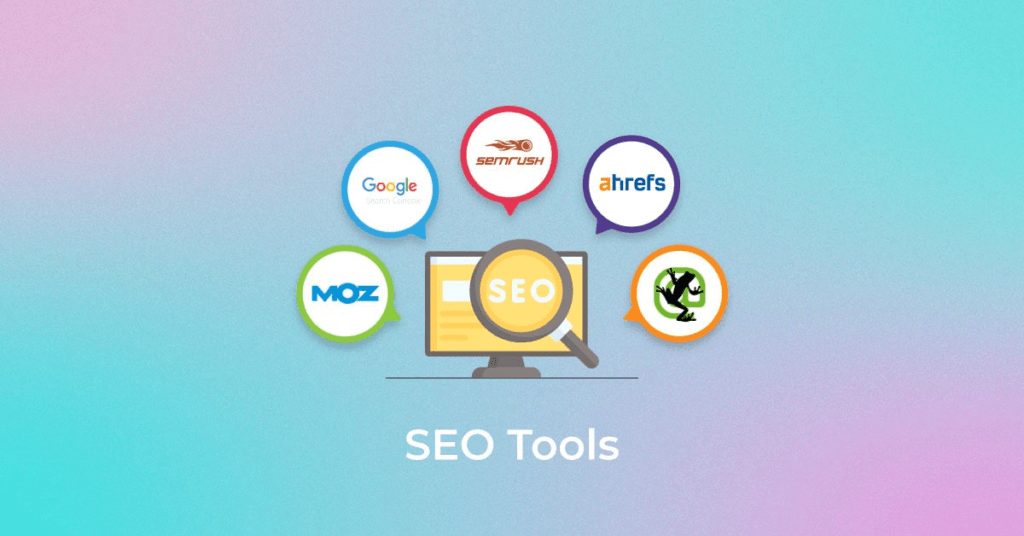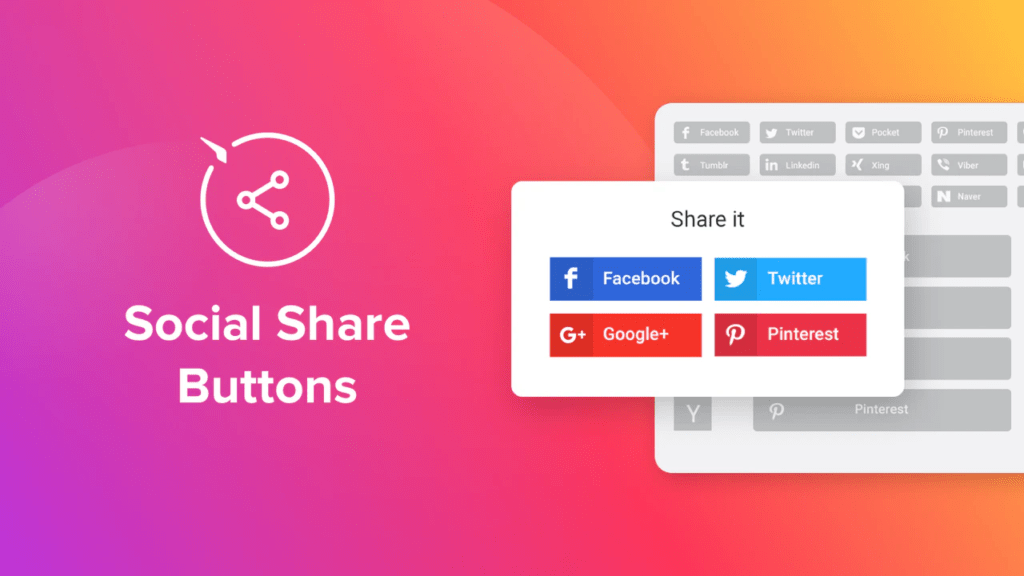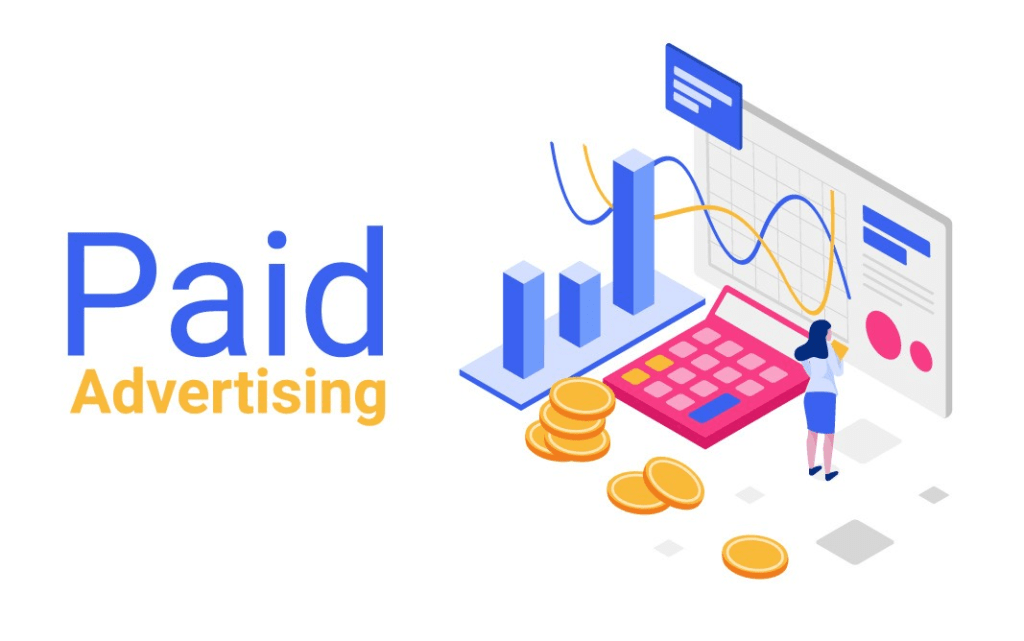Driving traffic for your website is crucial for brand growth and success.
Driving Traffic to Your Website helps build brand awareness and contributes significantly to customer acquisition and retention.
Driving Traffic to Your Website When running a blog, e-commerce site, or business platform, attracting visitors is essential for increasing conversions, generating leads, and driving revenue.
Implementing effective traffic-driving strategies can set your website apart from the competition and ensure long-term success.
Here are 30 practical strategies divided into free and paid methods to boost website traffic.
Table of Contents
Free Ways to Get More Driving Traffic to Your Website

1. Content Creation

Creating high-quality, informative, and engaging content is the foundation of driving traffic.
Develop a content strategy that includes diverse formats such as blog posts, articles, videos, podcasts, infographics, and case studies to appeal to different audience preferences.
Ensure your content addresses pain points, provides actionable insights, and is optimized for search engines by using relevant keywords.
Additionally, consider incorporating storytelling techniques and visual elements to captivate your audience and encourage sharing.
Consistently update and expand your content library to keep it fresh and relevant.
2. Topic Expertise

Position yourself as an authority in your niche by creating in-depth content that covers topics extensively, such as comprehensive guides, whitepapers, and case studies.
Dive deep into the subject matter, providing unique insights and data-backed findings to differentiate yourself from competitors.
Consistently updating content with fresh information and staying current with industry trends further strengthens your expertise.
Demonstrating such expertise builds trust, encourages repeat visitors, and can lead to collaborations, guest blogging opportunities, and backlinks that further boost your site’s visibility.
3. Organic Social Media

Leverage platforms like Instagram, Facebook, Twitter, LinkedIn, TikTok, and Pinterest to share your content effectively, as it will grow your social media.
Develop a consistent posting schedule and tailor your content for each platform’s unique audience and format preferences.
Engage with your followers by responding to comments, starting conversations, and using interactive features like polls and Q&A sessions.
Joining relevant groups and communities within these platforms can also help expand your reach.
Incorporate trending hashtags and collaborate with other content creators to increase visibility further.
Consistency and genuine engagement with your audience can drive significant traffic and foster a loyal online community.
4. Website Analysis

Regularly analyze your website’s performance using tools like Google Analytics to identify areas for improvement and track visitor behavior.
Monitor page views, bounce rates, session durations, and conversion rates to understand how users interact with your site.
Use heatmaps and session recordings to visualize user navigation patterns and pinpoint friction points.
By understanding these insights, you can make data-driven decisions to optimize content, improve website structure, and enhance the overall user experience.
Implement regular audits to align your site with traffic goals and conversion strategies.
5. Collaborate with Influencers

Partnering with influencers in your industry can expose your website to a broader audience and build credibility within your niche.
By collaborating with influencers with an established and engaged following, you can tap into their audience base and introduce your brand to potential customers who may not have discovered you.
Influencer collaborations include sponsored posts, product reviews, co-hosted webinars, or social media takeovers.
Providing influencers with creative freedom to showcase your brand authentically can further enhance trust among their followers.
Long-term partnerships with influencers can also lead to consistent traffic and more assertive brand advocacy.
6. Email List Building

Build and maintain an email list to inform your audience about new content, offers, and updates.
A strong email list allows you to build direct relationships with your audience, as subscribers have already shown interest in your brand.
Segment your list based on user behavior, interests, or demographics to send personalized content tailored to their preferences.
Use lead magnets like free eBooks, exclusive discounts, or webinars to encourage sign-ups.
Consistent email campaigns with valuable content, including tips, product launches, and curated content, can help nurture leads and convert them into loyal customers.
Newsletters Driving Traffic to Your Website direct traffic to your site and encourage repeat visits and ongoing engagement.
7. Community Engagement

Participate actively in relevant online communities, forums, and social groups like Reddit, Quora, and niche-specific Facebook or LinkedIn groups.
Engage by answering questions, sharing valuable insights, and contributing to discussions rather than just promoting your website.
Focus on establishing yourself as a helpful resource and link back to your site only when it adds genuine value to the conversation.
Joining industry-specific Slack channels and Discord servers can also help you connect with like-minded individuals and potential customers.
Consistency in providing helpful, non-promotional content builds trust, encourages repeat visits, and can create long-term referral traffic to your website.
8. On-Page SEO

Optimize your website content using comprehensive on-page SEO techniques to improve search engine rankings and user experience.
This involves keyword optimization, ensuring your primary and secondary keywords are naturally integrated into headings, subheadings, and content.
Craft compelling meta descriptions that accurately summarize the content while encouraging clicks.
Use proper header tags (H1, H2, H3) to structure content hierarchically for better readability and SEO performance.
Optimize image alt texts, include internal linking strategies to guide visitors, and ensure clean and descriptive URL structures.
On-page SEO also improves content readability and mobile-friendliness and ensures content length aligns with search intent.
Implementing these strategies helps search engines understand your content better, leading to improved rankings and increased organic traffic.
9. Quality Backlinks

Earn backlinks from authoritative websites to boost your domain authority and search rankings.
Backlinks act as votes of confidence from other websites, signaling to search engines that your content is trustworthy and valuable.
Focus on acquiring high-quality backlinks from websites with strong domain authority and relevance to your niche.
Guest posting, outreach, and content collaborations effectively secure backlinks.
Create link-worthy content such as original research, infographics, and expert roundups to attract backlinks naturally.
Additionally, monitor your backlink profile regularly using tools like Ahrefs or SEMrush to identify opportunities for disavowing low-quality links and to discover new link-building prospects.
10. Video Marketing

Create and share videos on platforms like YouTube, TikTok, and Instagram Reels to attract a broader audience and drive traffic to your website.
Develop diverse video content, such as tutorials, product reviews, behind-the-scenes footage, live Q&A sessions, and storytelling videos to appeal to various audience preferences.
Optimize video titles, descriptions, and tags with relevant keywords for better search visibility. Incorporate compelling thumbnails and engaging calls-to-action (CTAs) within the video to encourage viewers to visit your website.
Sharing short video snippets across multiple platforms and collaborating with influencers can further expand your reach and drive consistent traffic to your site.
11. Content Repurposing

Repurpose existing content into different formats like infographics, videos, or podcasts to reach new audiences and extend content lifespan.
Transform blog posts into visually engaging infographics summarizing key points or create short-form videos highlighting the main takeaways for platforms like Instagram Reels and TikTok.
Turn articles into audio content through podcasts or narrated blog posts to cater to audiences who prefer listening.
Additionally, consider compiling related posts into comprehensive eBooks or whitepapers or break down longer content into smaller, shareable snippets for social media.
This multi-channel approach helps you maximize the value of your content and continuously attract new visitors to your website.
12. SEO Tools

Use free SEO tools like Google Search Console, Ubersuggest, and Moz to identify optimization opportunities and improve website visibility.
Google Search Console provides valuable insights into how your site appears in search results, highlights indexing issues, and offers performance data on clicks and impressions.
Ubersuggest helps identify keyword opportunities, backlink data, and content ideas for better ranking potential. Moz offers domain authority checks, keyword tracking, and competitive analysis tools.
Combining these tools allows you to monitor site health, discover technical SEO errors, track keyword rankings, and identify opportunities for content improvement, ultimately leading to increased search visibility and organic traffic.
13. Historical Optimization

Update and optimize old content to maintain its relevance and ranking potential in search results.
Start by identifying high-performing content that has declined in traffic using tools like Google Analytics. Refresh the content by adding new data, examples, and recent statistics to keep it current.
Ensure the content aligns with current SEO best practices, including keyword optimization, updated meta descriptions, and improved readability.
Replace outdated links and ensure that multimedia elements like images and videos remain functional and relevant.
Additionally, consider repurposing updated content into other formats, such as infographics or videos, to reach a broader audience.
Consistently revisiting and improving older posts can significantly boost organic traffic by making them competitive in search rankings again.
14. Voice Search Optimization

Optimize content for voice search by incorporating conversational keywords and question-based queries to align with how people use voice assistants like Alexa, Siri, and Google Assistant.
Focus on long-tail keywords and natural language phrases, as voice search queries are more detailed and conversational.
Structuring content in a Q&A format can help match common voice search patterns. Additionally, ensure your site is mobile-friendly and loads quickly, as most voice searches are performed on mobile devices.
Schematic markup can improve visibility by providing search engines with more precise context about your content, increasing the chances of appearing in featured snippets and voice search results.
15. Local SEO

Enhance your website’s visibility for local searches by optimizing Google My Business (GMB) listings, incorporating local keywords, and ensuring consistency across directory listings.
Claim and verify your GMB profile, providing accurate information such as business name, address, phone number, operating hours, and website URL.
Encourage satisfied customers to leave positive reviews, as they contribute to higher rankings in local searches.
Incorporate location-specific keywords throughout your website, including meta descriptions, headers, and content.
Additionally, ensure your business is listed on reputable online directories such as Yelp, Bing Places, and Apple Maps, maintaining NAP (Name, Address, Phone Number) consistency across all platforms.
Creating locally relevant content, like blog posts about community events or collaborations, can further boost your local SEO efforts.
16. QR Codes

Create QR codes for easy access to your website, especially for offline marketing campaigns and product packaging.
QR codes can be printed on brochures, business cards, event banners, and even in-store displays, allowing potential customers to quickly access your website by scanning the code with their smartphones.
They are also effective for linking directly to product pages, special offers, or downloadable resources, enhancing user convenience.
Customize the design of your QR codes to align with your brand identity while ensuring they remain scannable.
Consider using dynamic QR codes, which allow you to update the linked content without changing the printed code, making them versatile for long-term campaigns.
Tracking QR code scans through analytics tools can provide insights into user behavior and the effectiveness of your offline marketing strategies.
17. A/B Testing

Conduct A/B tests on landing pages, headlines, and calls-to-action (CTAs) to optimize your website’s performance and conversions.
A/B testing involves comparing two versions of a webpage or element to determine which performs better based on key metrics such as click-through rates, time on page, and conversion rates.
Test variations of headlines, button colors, image placements, and messaging styles to understand user preferences.
Tools like Google Optimize, Optimizely, and VWO can help streamline the A/B testing process by providing performance insights and statistical significance. Testing one element at a time is essential to isolate variables effectively.
Additionally, segment your audience to test how user groups respond to variations, allowing for more personalized optimization strategies.
Continuously refining your pages through A/B testing can enhance user experience, reduce bounce rates, and drive higher conversions over time.
18. Internal Linking

Use strategic internal linking to guide visitors to related content on your site, improving user experience and SEO.
Internal linking helps distribute link equity across your site, which can improve rankings for various pages.
Connecting related articles, blog posts, and product pages encourages visitors to explore more content, increasing dwell time and reducing bounce rates.
Ensure your anchor texts are descriptive and relevant to the linked content to provide a clear context for users and search engines.
Consider creating content hubs where pillar posts link to multiple in-depth articles on related subtopics, strengthening topical authority and simplifying site navigation.
Regularly audit your internal links to ensure they remain functional and optimized for performance.
19. Technical SEO

Technical Seo is to optimize technical aspects of your website, such as site speed, mobile responsiveness, and secure HTTPS connections for better rankings and user experience.
Start by improving your website’s loading speed, as faster websites rank higher in search results and offer a better user experience.
Use tools like Google PageSpeed Insights and GTmetrix to identify speed issues and optimize elements such as image compression, caching, and minimizing JavaScript.
Ensure mobile responsiveness by using a responsive web design framework like Bootstrap and testing your site on multiple devices to ensure a seamless experience.
HTTPS encryption secures user data and serves as a ranking factor for search engines, making it vital for security and SEO.
Additionally, focus on structured data implementation, fixing broken links, and ensuring proper XML sitemaps for better indexing.
Regular technical audits help maintain long-term site health and search visibility.
20. Community Building

Create forums or groups related to your niche where users can engage, share ideas, and access your content.
Consider platforms like Facebook Groups, Discord servers, or dedicated forum software such as phpBB or Discourse.
Encourage active participation by sparking conversations, posting regular discussion prompts, and sharing exclusive content that members can access only within the community.
Appoint moderators to ensure a positive and engaging atmosphere while preventing spam.
Foster a sense of belonging by recognizing active contributors and celebrating community milestones.
This approach builds brand loyalty and turns members into advocates who share your content with broader audiences.
21. Content Offers

Offer free resources like eBooks, checklists, or templates in exchange for visitor engagement and email sign-ups.
These resources should provide genuine value, such as solving everyday problems or offering step-by-step guidance relevant to your audience.
Design visually appealing lead magnets and ensure they are easily accessible through strategically placed call-to-action buttons across your site.
Consider segmenting your audience and offering different resources tailored to their interests for better engagement.
Additionally, implement drip email campaigns to follow up with subscribers, providing them with more valuable content and encouraging repeat visits.
This approach not only grows your email list but also nurtures leads and drives sustained traffic to your website.
22. Media Coverage and Public Relations

Gain media coverage by crafting well-targeted press releases highlighting your brand’s unique story, achievements, or industry contributions.
Develop media pitches personalized for specific journalists and outlets relevant to your niche, emphasizing the newsworthiness of your content.
Engage with journalists and media professionals through platforms like HARO (Help a Reporter Out) or LinkedIn to build relationships and offer yourself as a subject matter expert for interviews and guest opinions.
Collaborate with journalists for co-authored content, exclusive stories, and expert quotes showcasing your expertise while linking to your website.
Additionally, consider hosting press events, product launches, and webinars where media representatives can gain firsthand insights, leading to more organic coverage.
This comprehensive media outreach strategy can significantly enhance your brand visibility and drive consistent referral traffic to your website.
23. Social Share Buttons

Add prominently placed social share buttons on your website to encourage visitors to share your content across their social networks easily.
Ensure the buttons are visually appealing and accessible on desktop and mobile devices for a seamless sharing experience.
To maximize reach, incorporate options for popular platforms like Facebook, Twitter, LinkedIn, Pinterest, and WhatsApp.
Consider placing share buttons at the beginning and end of blog posts and near key content sections that are highly shareable.
Additionally, use analytics tools to track shares and engagement, which can help refine your strategy for better visibility and traffic generation.
24. CTR Optimization

Improve click-through rates (CTR) by optimizing titles, meta descriptions, and CTAs to make them more compelling and attention-grabbing.
Craft engaging, curiosity-driven titles that incorporate primary keywords while sparking interest.
Ensure meta descriptions summarize the content, emphasizing benefits and solutions while maintaining a persuasive tone.
CTAs should use action-oriented language, highlight urgency, and provide clear instructions, such as ‘Learn More,’ ‘Get Started,’ or ‘Download Now.’
Experiment with variations through A/B testing to identify the most effective combinations, ultimately increasing traffic and conversion rates.
25. Academy and Knowledge Base Posts
To attract informational traffic, create comprehensive educational content such as in-depth tutorials, detailed how-to guides, and well-structured knowledge-base articles.
Focus on breaking down complex concepts into easily understandable steps, incorporating visual aids like screenshots, diagrams, and video walkthroughs where necessary.
Ensure each resource addresses common pain points and frequently asked questions within your niche.
Additionally, consider offering downloadable content like PDFs or templates to add value.
Consistently updating this content with the latest information and linking related articles can position your site as a go-to resource, encouraging repeat visits and enhancing organic search visibility.
26. Social News Sites
Submit your content to Reddit, Digg, and Medium to reach niche audiences and drive traffic.
Reddit offers various subreddits dedicated to specific interests where your content can gain targeted visibility if shared thoughtfully.
Digg focuses on trending content and viral stories, making it ideal for articles with wide appeal.
As a content-sharing platform, Medium allows you to republish blog posts, ensuring you reach a broader audience while maintaining proper content attribution.
Engaging with the communities on these platforms by commenting and interacting with others’ content can further amplify your reach and build lasting connections with potential site visitors.
Paid Ways to Get More Traffic to Your Website
1. Paid Advertising

Invest in platforms like Google Ads, Facebook Ads, and LinkedIn Ads to drive targeted paid traffic effectively.
Google Ads can help you appear at the top of search results for specific keywords, making it ideal for capturing intent-driven traffic.
Facebook Ads allow precise audience targeting based on interests, behaviors, and demographics, while LinkedIn Ads are particularly effective for B2B campaigns, helping you connect with decision-makers and industry professionals.
Utilize retargeting strategies on these platforms to reach visitors who have previously interacted with your site, enhancing conversion opportunities.
Regularly monitor your ad performance through metrics such as CTR, CPC, and conversion rates to optimize campaigns and maximize ROI.
2. Contests and Giveaways
Run engaging contests and giveaways where participants can enter by visiting your website, sharing your content, or signing up for your newsletter.
Create themed contests relevant to your audience’s interests and offer attractive prizes that align with your brand, such as exclusive discounts, product bundles, or limited-edition items.
Promote these campaigns across social media, email newsletters, and influencer collaborations to maximize reach.
Incorporate entry methods like bonus points for referring friends or completing multiple actions to encourage viral sharing.
Additionally, use landing pages with clear calls-to-action and tracking tools to measure participant engagement and traffic impact effectively.
3. Guest Posting

Invest in guest posting on high-authority websites as part of your traffic generation strategy.
This involves collaborating with reputable sites within your industry by contributing well-researched, valuable articles that link back to your website.
Guest posting not only provides exposure to a broader audience but also helps earn quality backlinks, improving your search engine rankings.
Ensure the content you submit is unique, informative, and aligns with the host site’s audience interests.
Additionally, establish relationships with site editors for long-term collaboration and recurring opportunities to contribute content, further expanding your brand visibility and organic traffic.
4. Thought Leadership
Invest in thought leadership content through a diverse mix of sponsored posts, expert interviews, and participation in industry events to establish your brand as an authority in your niche.
Sponsored posts on reputable platforms can highlight your expertise and attract a targeted audience.
Interviewing with industry leaders allows you to share insights, personal experiences, and unique perspectives, further positioning your brand as a trusted voice.
Additionally, speaking at conferences, panels, and webinars showcases your knowledge and provides networking opportunities with peers and potential clients.
Thought leadership content helps build credibility, fosters trust with your audience, and enhances brand visibility, ultimately high-quality Driving Traffic to Your Website and boosting your overall market presence.
Website Traffic Is Waiting For You
Driving traffic to your website involves a mix of strategic efforts and consistency.
Combining free and paid strategies can create a sustainable traffic growth plan that boosts visibility, engagement, and conversions.
Start implementing these techniques today and watch your website traffic soar.






